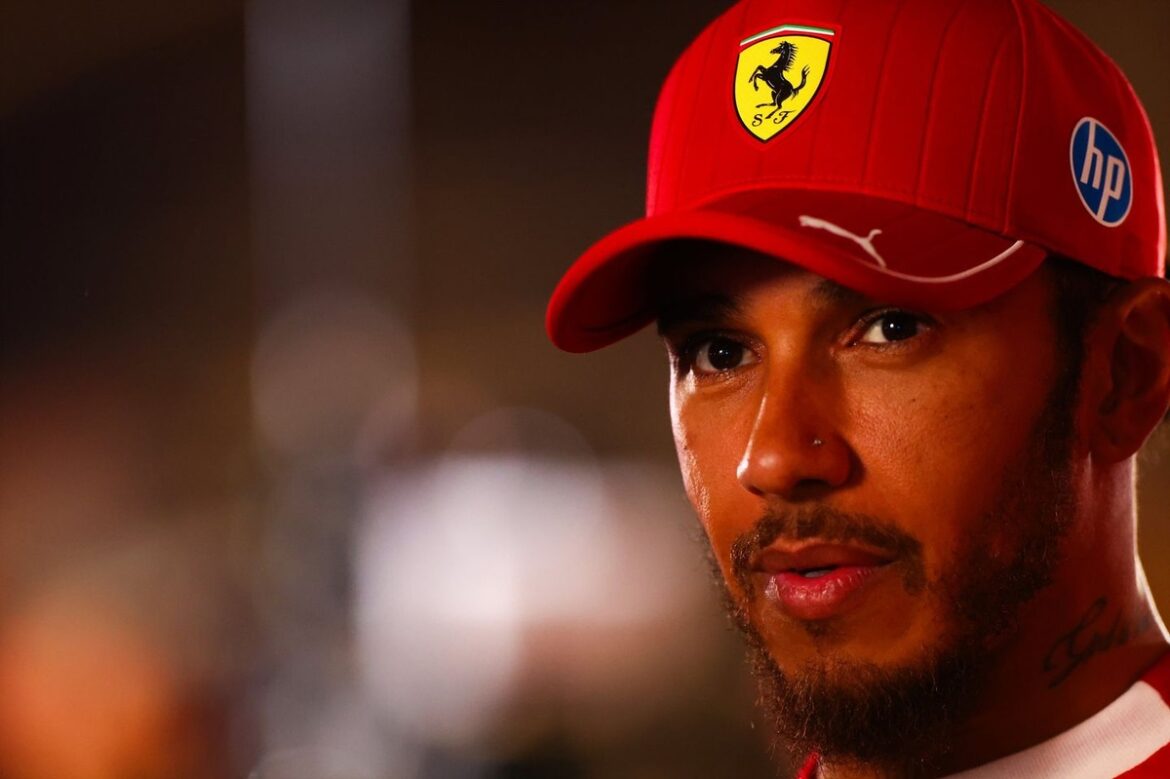Lewis Hamilton Faces Challenges with Ferrari at the Saudi Arabian Grand Prix
Lewis Hamilton experienced a challenging race at the Saudi Arabian Grand Prix, finishing in seventh place, a result that left him visibly frustrated. After achieving a high with his victory in the sprint race in Shanghai last month, Hamilton entered the Jeddah circuit with a clear sense of the difficulties he faced in adapting to his new Ferrari F1 car. The seven-time world champion candidly expressed that he felt he needed "a brain transplant" to fully grasp the intricacies of his new vehicle.
Hamilton’s transition from Mercedes to Ferrari over the winter has not been as smooth as he had hoped. Despite the earlier success in Shanghai, he has encountered significant hurdles in his performance. In stark contrast to Hamilton’s struggles, his teammate Charles Leclerc showcased the potential of the Ferrari by finishing third in the race, highlighting the disparity in performance between the two drivers.
When asked about any positives he could draw from his second stint after the tire stop, Hamilton was quick to dismiss the notion. He stated, “No. There was not one second [I was comfortable].” This lack of comfort behind the wheel underscores the difficulties he is experiencing as he acclimates to the new car.
The performance of the Ferrari has been a point of discussion, particularly as Hamilton noted that the car is capable of achieving a podium finish, as demonstrated by Leclerc’s strong showing. Hamilton remarked, “Well, clearly the car is capable of being P3, so Charles did a great job today – so I can’t blame it on the car.” This acknowledgment of his teammate’s performance indicates Hamilton’s understanding of the car’s potential, even as he grapples with his own challenges.
Sky F1 pressed Hamilton further on the difficulties he faced during the race, and he reiterated that there was no way to attribute his performance issues solely to the car itself. When asked if he had insights into why he was struggling compared to his teammate, Hamilton simply responded, “No.” His candid admission reflects the complex nature of adapting to a new team and car, especially at such a competitive level.
Ferrari’s team principal, Fred Vasseur, weighed in on Hamilton’s performance, suggesting that the legendary driver may be facing difficulties in adjusting to the team dynamics and the new car. In an interview shortly after the race, Vasseur indicated that he had not yet discussed specifics with Hamilton but acknowledged the ups and downs in his performance. He stated, “It’s not that he was always off the pace, but let me discuss with him first.”
Vasseur emphasized that the root of the issue might not be purely technical but also psychological, as Hamilton navigates the unique challenges of adapting to a new environment. “There is no problem. It is confidence with the car and a little bit with himself in that everything is new,” Vasseur explained. This sentiment highlights the importance of mental fortitude in the high-stakes world of Formula 1, where confidence in the car can significantly impact a driver’s performance.
The lack of extensive practice time prior to the race may have contributed to the difficulties Hamilton faced during the weekend. Vasseur noted, “This weekend when you don’t do a long stint on Friday, we were struggling a little bit with the balance – but let’s see.” The implications of limited practice on a driver’s ability to find the right setup for the car cannot be overstated, particularly in a sport where every fraction of a second counts.
As the season progresses, Hamilton’s ability to adapt to his new circumstances will be closely scrutinized. The contrast between his performance and that of Leclerc serves as a reminder of the challenges that come with switching teams, especially at a point in a driver’s career when expectations are exceptionally high. Despite the difficulties, Hamilton’s experience and skill remain invaluable assets for Ferrari as they look to improve their standing in the championship.
The competitive nature of Formula 1 means that teams and drivers must constantly evolve and adapt. Hamilton’s journey with Ferrari is just beginning, and while the early signs may not be promising, the potential for growth and improvement is significant. As he continues to familiarize himself with the nuances of his new car, there is hope that he will soon find the rhythm necessary to compete at the highest level once again.
Ferrari fans will undoubtedly be watching closely as Hamilton works to turn his fortunes around. The pressure on him to perform is immense, but with the right adjustments and a bit of patience, there is every possibility that he can reclaim the form that has made him a legend in the sport. The journey is far from over, and the upcoming races will provide ample opportunities for Hamilton to showcase his talent and determination.
In summary, Lewis Hamilton’s experience at the Saudi Arabian Grand Prix illustrates the complexities of adapting to a new team and car in the fast-paced world of Formula 1. While the challenges he faces are significant, the potential for improvement remains. With support from his team and a focus on building confidence, Hamilton can work towards overcoming these hurdles and returning to the competitive form that has defined his illustrious career. Ferrari and its fans are eager to see how this new chapter unfolds as the season progresses.
